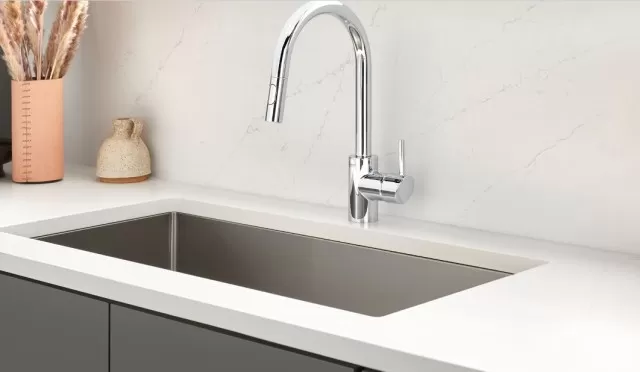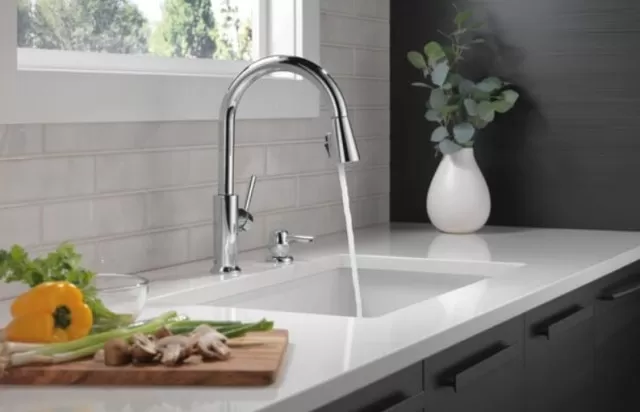Dealing with hard water residue, lime, and calcium buildup on faucet heads can be a challenging task.
Simply wiping them down with a cloth won’t always do the trick.
To help with this issue, Angela Brown, CEO of Savvy Cleaner, shares some tips on how to clean a faucet head effectively.
According to Brown, there are a few household items that can tackle grime, but the key is to prevent it from returning.
“The secret to maintaining clean faucets is to clean them daily,” advises Brown. By following the tips below and providing regular care, you can keep your faucets looking clean.
“Remember to always dry the faucets and knobs after use to prevent water with trace minerals from drying on them. ”
Cleaning Faucet with Soap

Brown suggests using mild Dish Soap and a soft-bristle scrub brush or a non-scratch scrub sponge to prevent mineral buildup around the faucet head.
This method is particularly effective when the faucet is already damp, such as after a shower in the bathroom or when doing dishes in the kitchen sink.
Cleaning Faucet with Steam

For hard water spots, lime scale, or rust buildup, Brown recommends using a handheld steamer with a soft-bristled attachment.
Steam Cleaning can effectively remove the buildup without damaging the finish or relying on strong chemicals.
Cleaning Faucet with Vinegar

While distilled White Vinegar is a commonly used cleaning solution, Brown advises caution when considering it for faucet heads.
Certain finishes, like those found on modern gold and bronze faucets, may not withstand the acidity of vinegar. Brown explains that white cleaning vinegar has a pH of 2.5, which is a strong acid. While it can remove grime, it may also dissolve the finish, leaving it dull or altering its color.
If you’re confident that your faucet’s material can handle vinegar, you can fill a plastic bag with equal parts water and white vinegar. Submerge the faucet head in the bag and secure it with a rubber band or zip tie.
Allow it to soak for 30 minutes to an hour, then remove the bag and run the faucet to dislodge any loosened debris. Finally, rinse and dry the faucet.
Cleaning Faucet Aerator

If you notice inconsistent water flow or a partial spray from the faucet, the aerator in the faucet head might need cleaning.
During any of the above cleaning methods, use a toothbrush or soft-bristle brush to loosen mineral deposits on the aerator screen. If that doesn’t improve the flow, check if the aerator is removable.
If it is, covers or close the drain to avoid losing any pieces, then remove the aerator, noting the order of the components. Soak the aerator in a solution of equal parts water and vinegar, and use a brush to dislodge any debris caught in the screen.
Finally, reassemble the faucet.
*The information is for reference only.